Syn.: Cerasus pensylvanica (L. f.) Loisel.
Family: Rosaceae Juss.
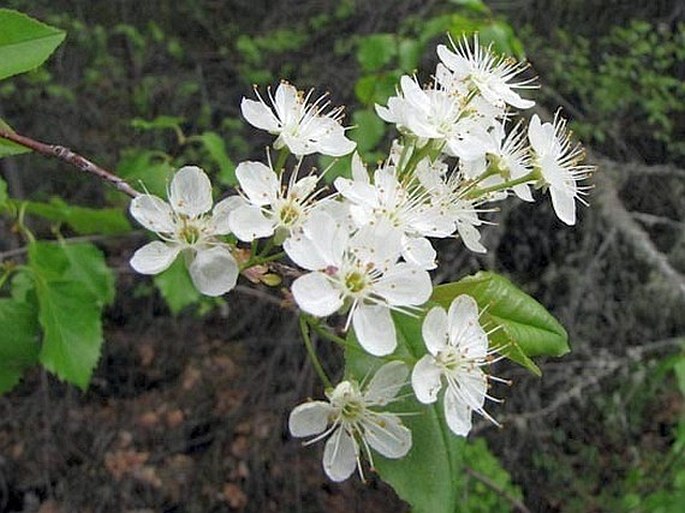
Distribution: North east of US (to the south reaching Appalachians and eastern Tennessee) and southeast of Canada (to the north to Newfoundland and southern Labrador), westward continues across southern Canada to British Columbia but only marginally in the prairies and foothills of the Rockies.
Ecology: Found in both moist and dry forest, clearings, meadows even grazing land. Sometimes it appears after wildfires. It can reach elevations of 1800 m. Blooms in May.
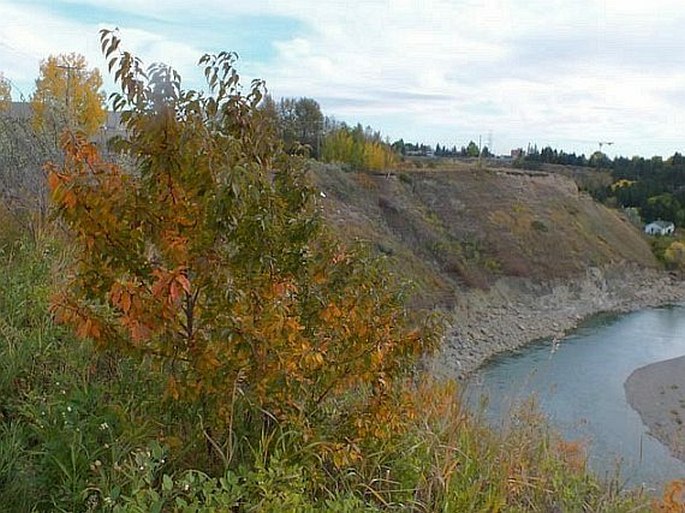
Description: Deciduous shrub or small tree, 5–15(–30) m tall. Trunk erect, thin, crown globular, bark reddish brown, shiny, peeling in horizontal bands. Young shoots are reddish brown, smooth, leaves alternate, reddish petiolate, lanceolate, 4–11 cm long, 1–4.5 cm wide, margins finely toothed. Inflorescence 5–7-flowered corymb, appearing with the leaves, flowers about 15 mm across, white, pentamerous, stamens about 20, pistil 1. Fruit is a berry-like drupe, bright red, 4–8 mm across, edible.
Use: The fruit is tart but makes excellent jelly. It is a favourite food of certain species of birds.
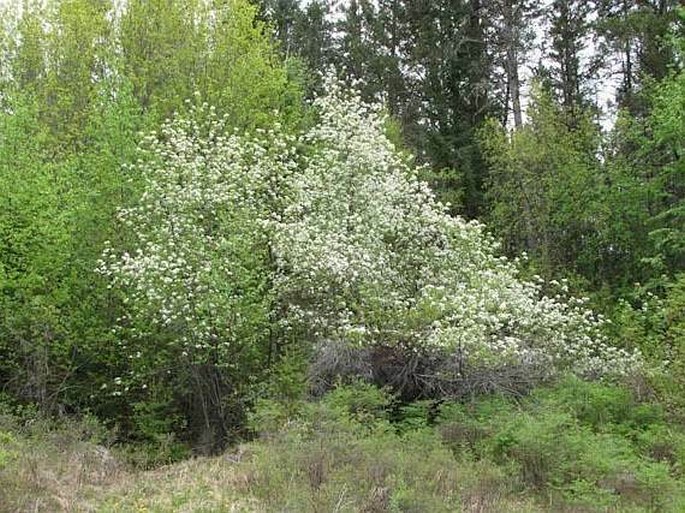
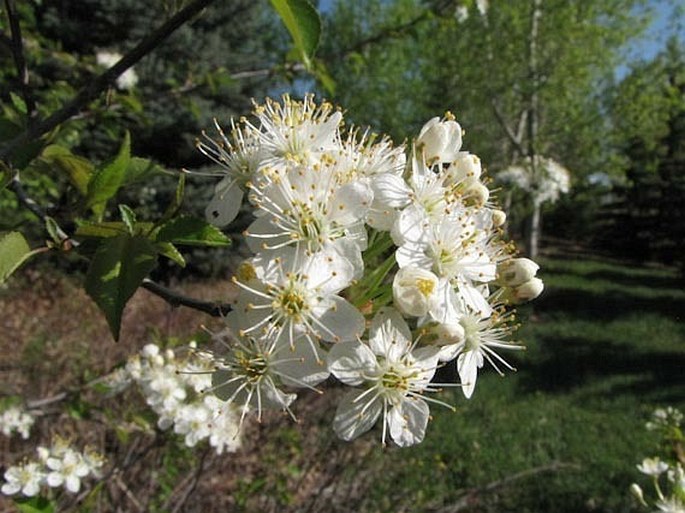
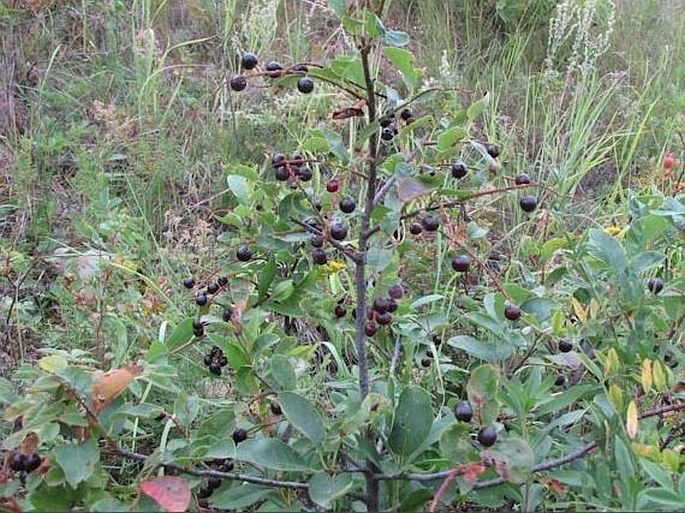
These images were taken in Canada, Alberta, Calgary, Elbow River and British Columbia, Fairmont Hot Springs (2013).


